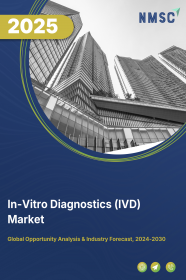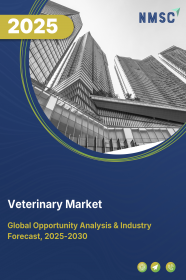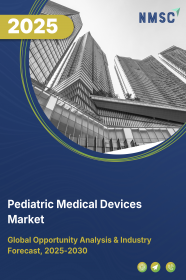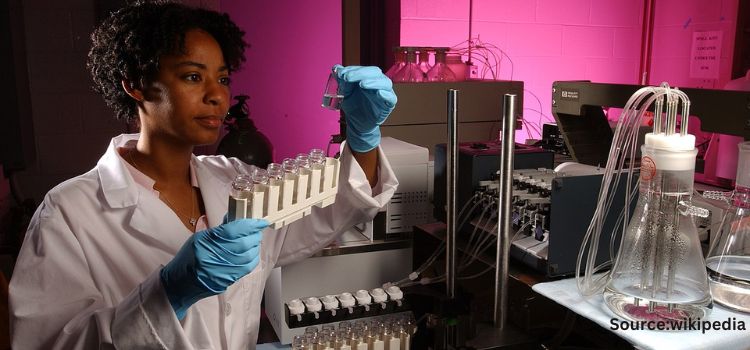
In-Vitro Diagnostic Market by Component (Reagents, Instruments, and Software & Services), by Technique (Immunodiagnostics, Hematology, Molecular Diagnostics, Tissue Diagnostics, Clinical Chemistry, and Other IVD Techniques), by Application (Infectious Diseases, Cancer, Cardiac Diseases, Immune System Disorders, Nephrological Diseases, Gastrointestinal Diseases, and Others), and by End Users – Global Opportunity Analysis and Industry Forecast, 2024–2030
Industry: Healthcare | Publish Date: 15-Feb-2025 | No of Pages: 490 | No. of Tables: 340 | No. of Figures: 297 | Format: PDF | Report Code : HC375
US Tariff Impact on In-Vitro Diagnostics (IVD) Market
Trump Tariffs Are Reshaping Global Business
Market Overview:
In Vitro Diagnostic Market was valued at USD 91.25 billion in 2022, and is predicted to reach USD 118.57 billion by 2030, with a CAGR of 3.2% from 2023 to 2030.
In vitro diagnostics (IVD) is the process of performing medical tests on samples such as blood, urine, or tissue outside the body, typically in a laboratory setting. These tests are conducted to diagnose, monitor, or screen various medical conditions or diseases, including infectious diseases, cancer, genetic disorders, and other similar conditions.
IVD tests use a range of technologies, including immunoassays, molecular diagnostics, clinical chemistry, and microbiology. The results of these tests are used by healthcare professionals to make informed decisions about patient care and treatment. IVD plays an essential role in healthcare, facilitating early detection of diseases, guiding treatment decisions, and improving patient outcomes.
Rise in incidences of chronic and infectious diseases
Increase in prevalence of chronic and infectious diseases propels demand for in vitro diagnostic techniques as these are the easiest techniques for diagnosis of any disease. According to the World Health Organization (WHO), diseases such as diabetes, cardiovascular diseases, cancer, and chronic respiratory diseases kill around 41 million people each year, which is equivalent to 71% of all deaths globally. In addition, the IVD market has witnessed significant growth, owing to the fast spread of COVID-19 virus, which has, in turn, increased demand for rapid diagnosis of individuals across the world. Industry players have responded to this increased demand by launching innovative solutions.
Rapid advancements in medical technology and research
In the past 50 years, IVD technologies have been used only in clinical labs. However, these tests are now being done at home or point-of-care (POC). These tests are accurate, less time-consuming, and can be easily performed. For instance, pregnancy test is performed at home by placing urine sample onto the test kit. Similarly, blood glucose level testing can be done using point-of-care testing devices such as Glucometer. HIV test can also be conducted at home using a mouth swab that is inbuilt with a diagnosis device. The swab collects saliva and provides results in 20 to 40 minutes. Previously, these tests were carried out in clinical laboratories where an blood samples were taken. These advancements along with the emergence of digital pathology have brought significant improvements and contributed toward growth of the global IVD market.
High cost of IVD restrains the market growth
High cost is one of the major factors that acts as a restraint for growth of the in vitro diagnostic (IVD) market. High cost of diagnostic tests can be a barrier for some patients, especially those without insurance or with high-deductible plans. This can limit use of diagnostic testing and prevent some individuals from accessing the healthcare they need. In addition, high cost of developing and manufacturing diagnostic tests can also affect the market by limiting number of new products that are introduced to the market. This can make it difficult for smaller companies to enter the market and limit innovation and progress in the field.
Evolution in technologies
As personalized medicine approach is gaining popularity, point-of-care technique of diagnostics has witnessed rapid growth. There are various innovations in the IVD instruments market, owing to growth in demand for quicker diagnosis test results. For instance, in January 2021, BGI Genomics Co. Ltd., received Emergency Use Authorization (EUA) from the FDA for its real-time fluorescent RT-PCR kit for qualitative detection or identification of SARS-CoV-2 nucleic acids in throat swabs and bronchoalveolar lavage fluid (BALF) from individuals suspected of COVID-19. Hence, evolution of technologies is expected to fuel growth of the IVD market.
North America is projected to dominate the in vitro diagnostic market
North America is a large and dynamic market, owing to factors such as an aging population, increase in incidences of chronic diseases, and advances in technology. It is characterized by a high degree of innovation, with many companies developing new products and technologies to meet changing needs of the healthcare system. Moreover, increase in demand for early disease detection and personalized medicine is expected to grow in the coming years.
The market is also driven by rise in adoption of advanced technologies such as digital pathology, companion diagnostics, and personalized medicine. Increase in adoption of laboratory automation and use of big data analytics in the diagnostic process is also expected to drive the market growth. In addition, the industry is composed of a mix of large, multinational companies and smaller, specialized firms. Some of the leading companies in the North America IVD market include Abbott Laboratories, Roche Diagnostics, Siemens Healthineers, and Beckman Coulter.
These companies have a strong presence in the market and offer a wide range of diagnostic products and services. For instance, in July 2020, Becton, Dickinson and Company obtained Emergency Use Authorization from the U.S. FDA for its fast diagnostic test for SARS-CoV-2, which uses the BD Veritor Plus System and generates results within 15 minutes. Presence of approximately 25,000 BD Veritor Plus Systems in hospitals, pharmacies, clinics, and urgent care centers throughout the U.S. has expanded access to COVID-19 testing in these healthcare facilities.
The IVD industry in North America is highly regulated, with companies subject to strict guidelines and requirements set by regulatory bodies such as the Food and Drug Administration (FDA) and Health Canada. This is to ensure safety, efficacy and quality of the products. The North America IVD industry is also characterized by a high degree of consolidation and mergers and acquisitions activity. This is driven by the need to achieve economies of scale and gain access to new technologies and products.
Asia-Pacific witnessed substantial growth in the in vitro diagnostic industry
The Asia-Pacific in vitro diagnostics (IVD) market is one of the fastest growing regions for IVD. Growth of the market is driven by factors such as increasingly aging population, growth in prevalence of chronic diseases such as diabetes, cancer, and increase in adoption of advanced diagnostic technologies. According to the International Diabetes Federation, an estimated 74 million adults in India were living with diabetes as of 2021. This has been a major driver of the IVD market in the country, as in-vitro diagnostic tests are essential for early detection and management of chronic diseases such as diabetes.
In addition, focus of governments on improving healthcare infrastructure and presence of global market players such as Siemens Healthineers, Abbott, and Roche Diagnostics further boosts growth of the market. For instance, the Healthy China 2020 initiative by the government of China aims to increase investments in the healthcare industry, improve accessibility and quality of healthcare services, and promote development of new medical technologies. This has led to increase in number of hospitals and clinics, boosting demand for IVD products and services in the country.
Global market players have significant resources to invest in research and development, which enables them to bring advanced and innovative diagnostic products to the market. This drives adoption of newer and more efficient diagnostic technologies, which drives the market growth. in June 2022, Siemens Healthineers announced that the company aims to entirely localize its production in China to improve production capabilities for Asia-Pacific.
Competitive Landscape
The in vitro diagnostic industry includes various market players such as Biomérieux, Roche Holding, Bio-Rad Laboratories, Inc, Becton, Dickinson and Company, Siemens Healthineers AG, Sysmex Corporation, Thermo Fisher Scientific Inc, Abbott Laboratories, Qiagen N.V., Danaher Corporation. These market players are adopting several strategies such as product launches, acquisitions, and innovation across various regions to maintain their dominance in the in vitro diagnostic market.
In addition, in May 2022, Becton, Dickinson and Company launched BD COR MX instrument, which integrates and automates complete molecular laboratory workflow, from sample processing to diagnostic test results for large, high-throughput labs.
Moreover, in February 2022, BioMerieux introduced MYACUTECASE, a free mobile application that helps in interpreting results of emergency and critical care biomarker tests using VIDAS. This app support clinicians in decision-making and monitoring of patients using emergency and critical care diagnostics.
Key Market Segments
By Component
-
Reagents
-
Instruments
-
Software & Services
By Technique
-
Immunodiagnostics
-
Hematology
-
Molecular Diagnostics
-
Tissue Diagnostics
-
Clinical Chemistry
-
Other IVD Techniques
By Application
-
Infectious Diseases
-
Cancer
-
Cardiac Diseases
-
Immune System Disorders
-
Nephrological Diseases
-
Gastrointestinal Diseases
-
Other Indications
By End User
-
Stand-alone Laboratories
-
Hospitals
-
Academics and Medical Schools
-
Point of Care Testing
-
Other End Users
By Region
-
North America
-
U.S
-
Canada
-
Mexico
-
-
Europe
-
Germany
-
UK
-
France
-
Spain
-
Italy
-
Rest of Europe
-
-
Asia-Pacific
-
China
-
Japan
-
India
-
Australia
-
South Korea
-
Rest of Asia-Pacific
-
-
RoW
-
Latin America
-
Middle East
-
Africa
-
Key Players
-
Biomérieux
-
Roche Holding
-
Bio-Rad Laboratories, Inc
-
Becton, Dickinson and Company
-
Siemens Healthineers AG
-
Sysmex Corporation
-
Thermo Fisher Scientific Inc
-
Abbott Laboratories
-
Qiagen N.V.
-
Danaher Corporation
REPORT SCOPE AND SEGMENTATION:
|
Parameters |
Details |
|
Market Size in 2021 |
USD 95.02 Billion |
|
Revenue Forecast in 2030 |
USD 118.57 Billion |
|
Growth Rate |
CAGR of 3.2% from 2023 to 2030 |
|
Analysis Period |
2022–2030 |
|
Base Year Considered |
2022 |
|
Forecast Period |
2023–2030 |
|
Market Size Estimation |
Billion (USD) |
|
Growth Factors |
Rising incidences of chronic and infectious diseases Rapid advancements in medical technology and research |
|
Countries Covered |
18 |
|
Companies Profiled |
10 |
|
Market Share |
Available for 10 companies |
|
Customization Scope |
Free customization (equivalent up to 80 analysts working hours) after purchase. Addition or alteration to country, regional & segment scope. |
|
Pricing and Purchase Options |
Avail customized purchase options to meet your exact research needs. |

















 Speak to Our Analyst
Speak to Our Analyst




















